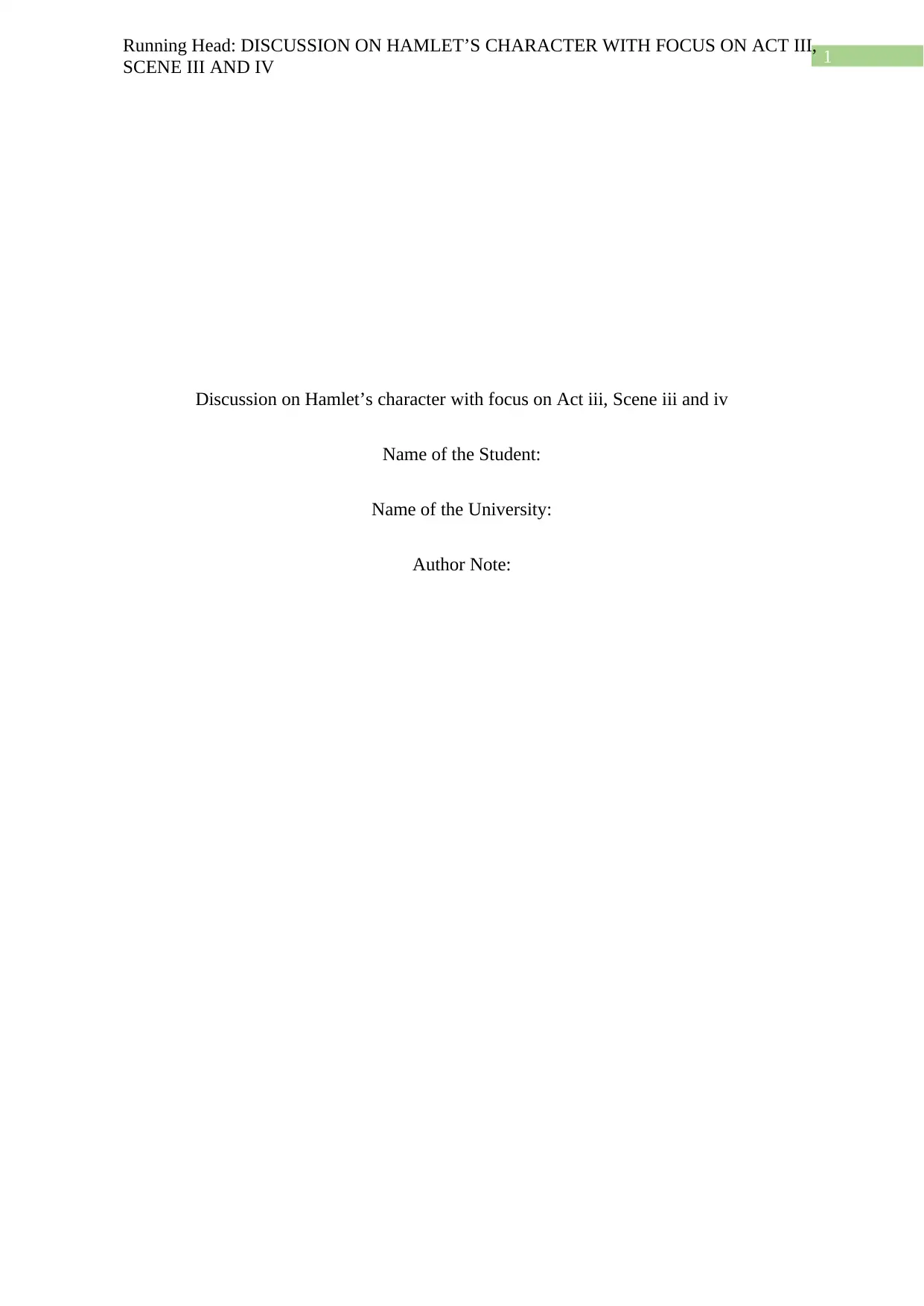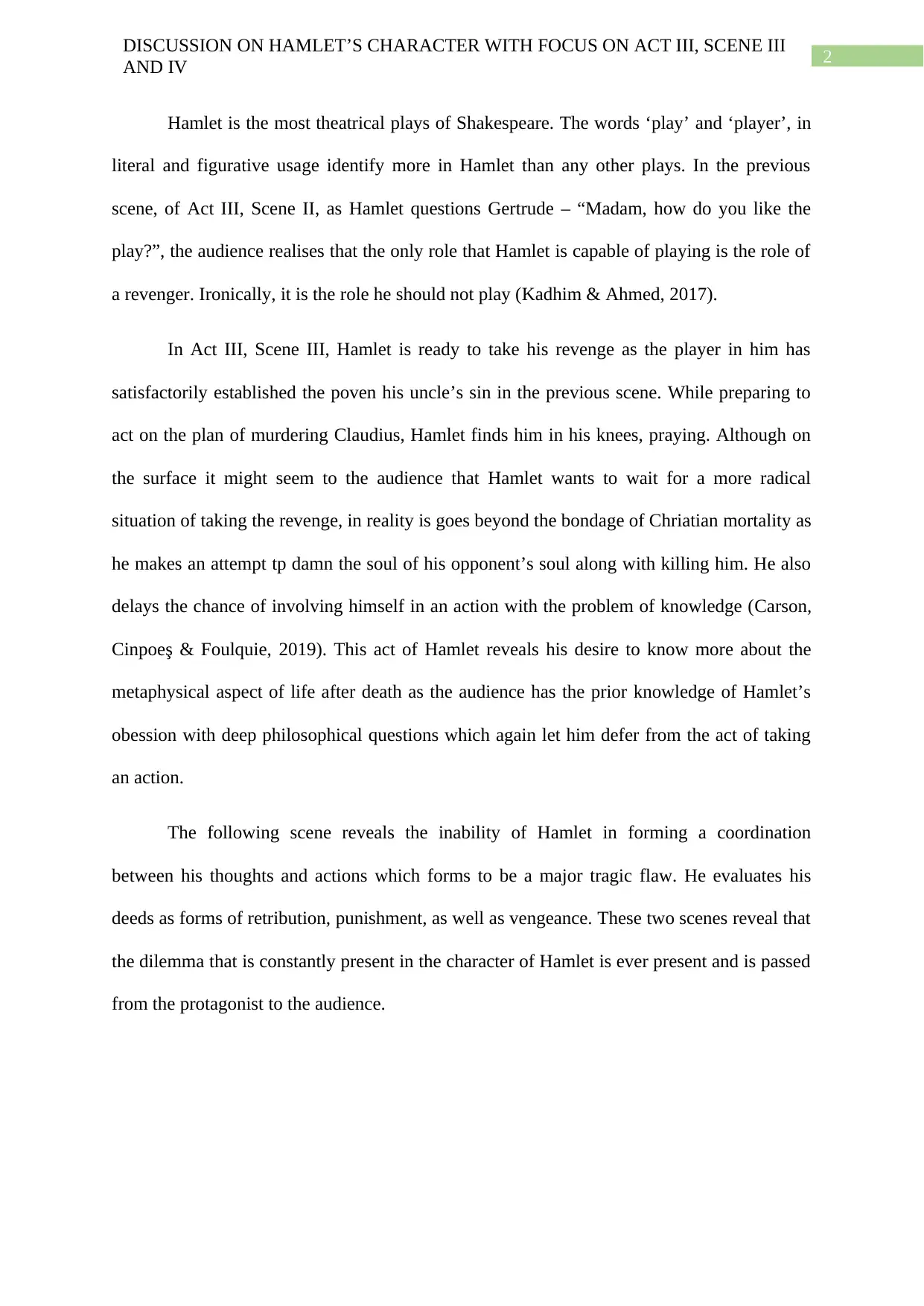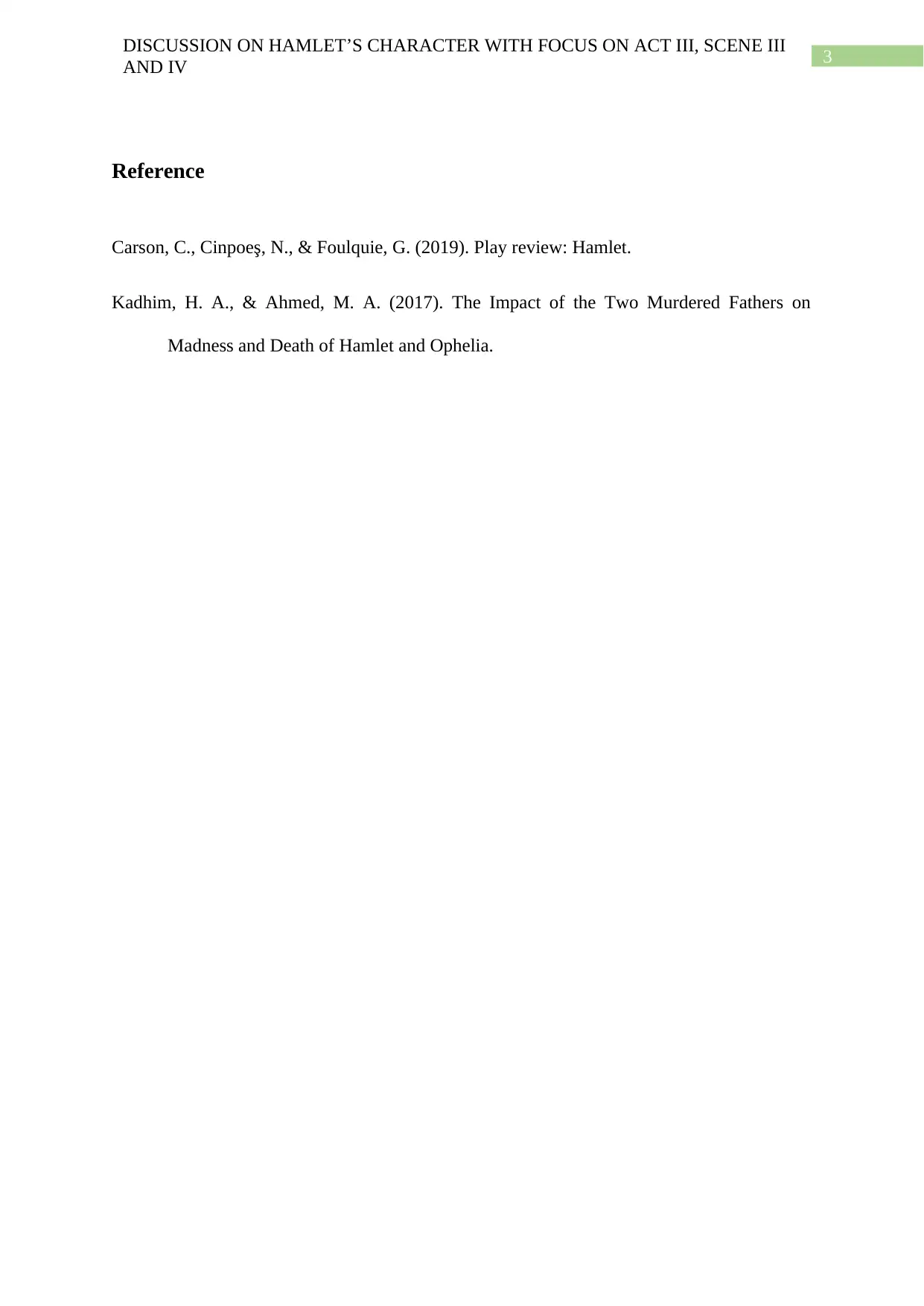Analysis of Hamlet's Character in Act III, Scenes III and IV
VerifiedAdded on 2022/09/09
|3
|509
|18
Discussion Board Post
AI Summary
This discussion post delves into the character of Hamlet, specifically examining Act III, Scenes III and IV of Shakespeare's play. The analysis explores Hamlet's internal conflicts, motivations, and tragic flaws, highlighting his indecisiveness and philosophical nature. The author examines Hamlet's hesitation to take revenge, his contemplation of mortality, and the contrast between his thoughts and actions. The post also touches upon the theme of revenge, Christian morality, and the impact of Hamlet's character on the audience. The document references critical analyses to support the claims made about the character's complexities and theatrical role.
1 out of 3






![[object Object]](/_next/static/media/star-bottom.7253800d.svg)